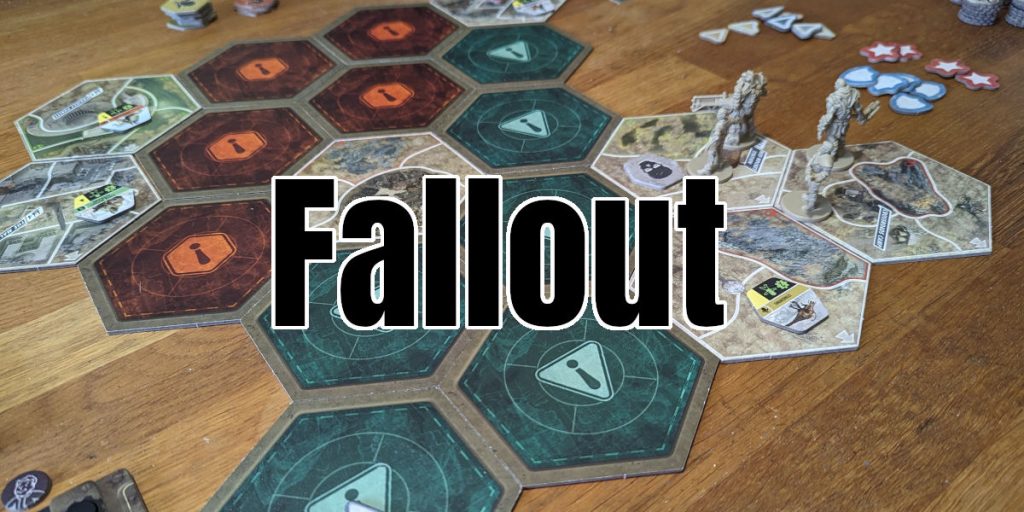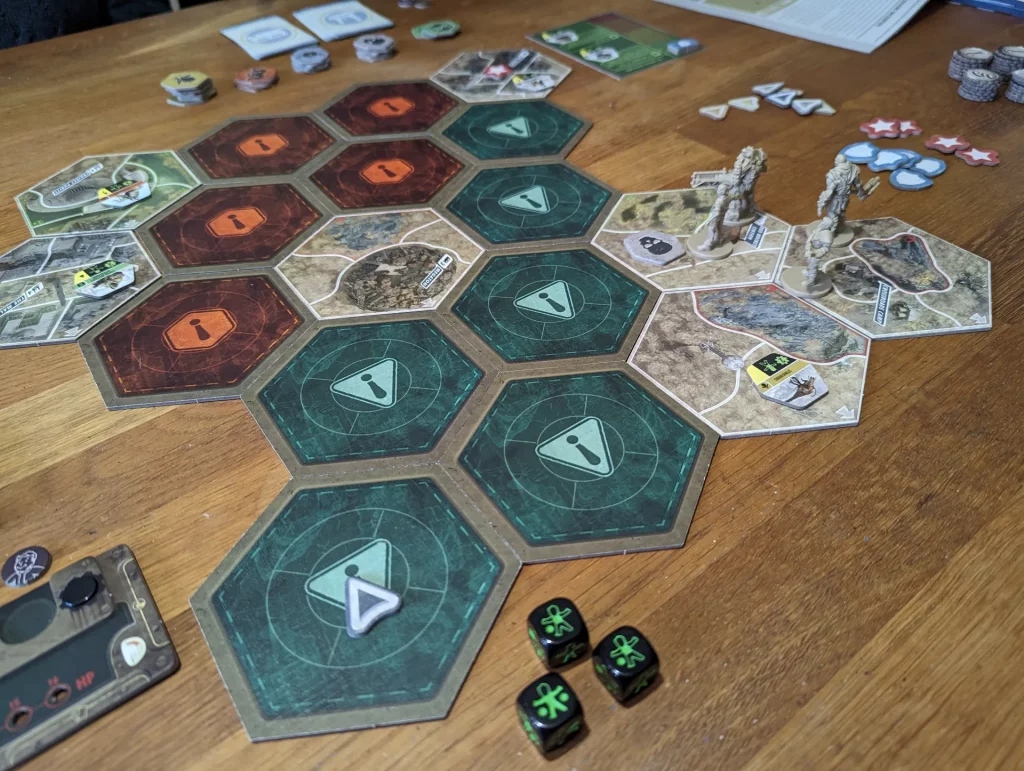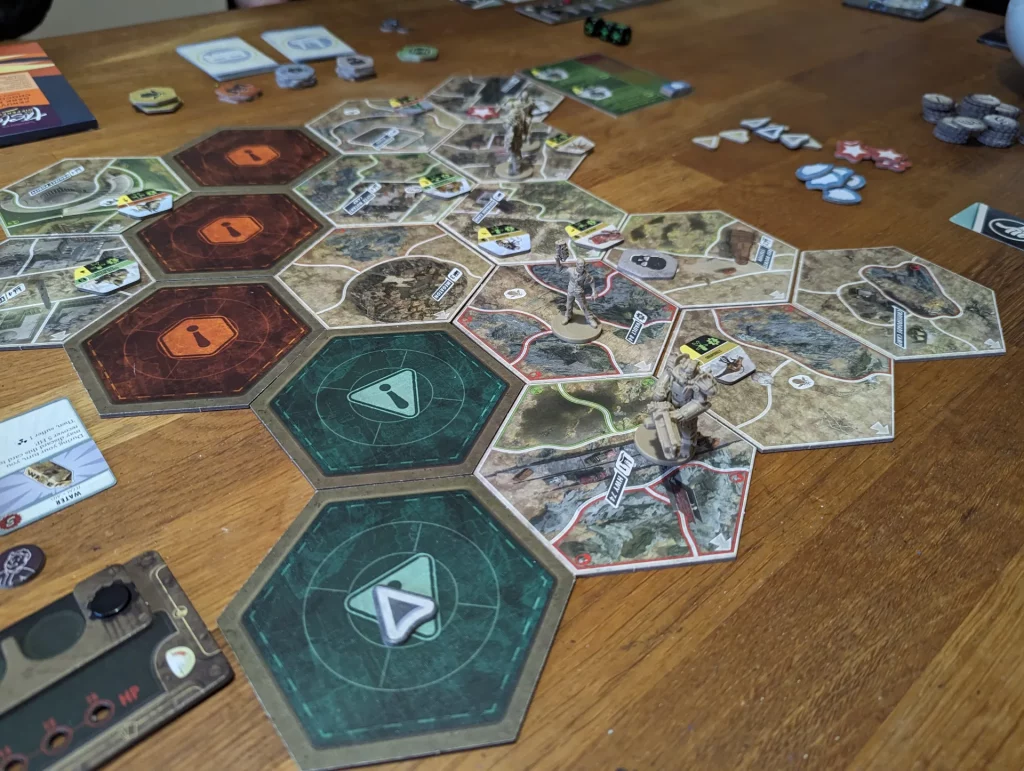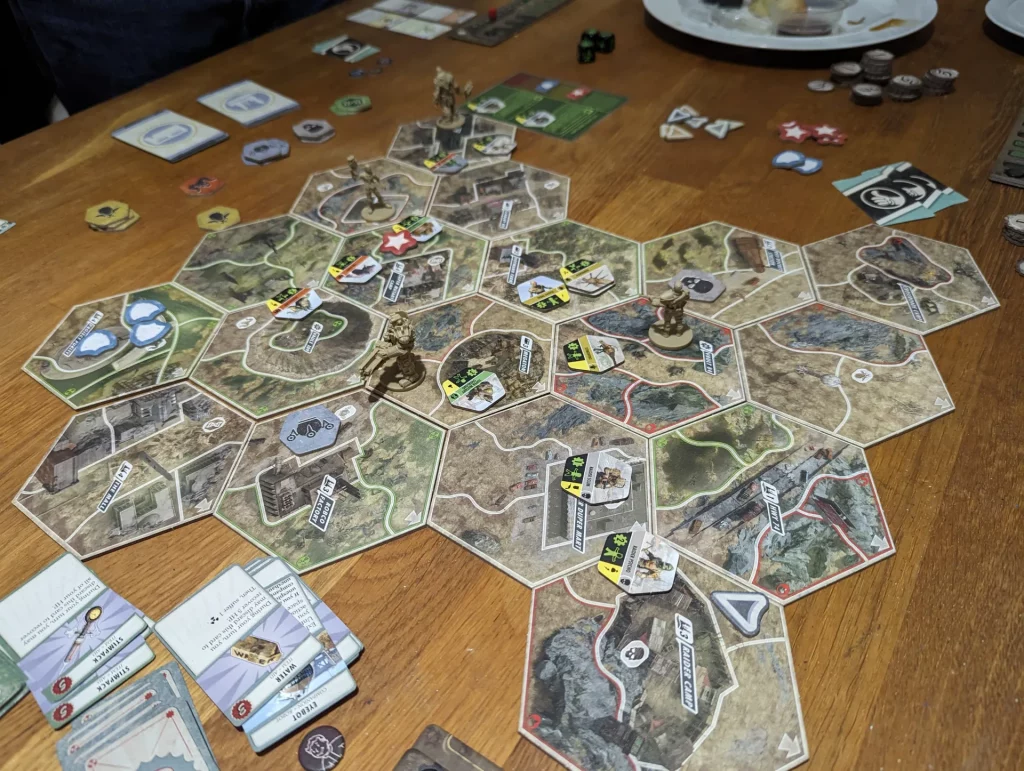Fallout

We had some friends over and got a chance to play the Fallout boardgame (which is based on the computer games). It’s been sitting on our shelves since it was first released, and this is possibly about the third time it’s been played in about six years. It suffers from being too complicated to be a quick game, but also only supports up to four players, so when we have a lot of people around for a big gaming session it’s often not an option.

On the surface it’s a tile exploration game. Players take on the role of one of the characters – in this game I got to be a ghoul that gets low hitpoints, but also regenerates in radiation spaces. Basic actions are to move, fight or explore. Uncovering terrain tiles may provide places to interact with (such as Vaults or Raider Camps), monsters or different types of terrain to move around.
At least in the games we’ve played, there isn’t too much to explore though, and the game area can be uncovered quite quickly. The main mechanic are the objective cards. There’s a whole stack of them, and the game is setup a bit like a Choose Your Own Adventure type of game.
The objectives aren’t completely random. You start with a few at the beginning of the scenario (investigate the wreckage of a crashed aircraft was ours), and then as you complete them they give you want set of card numbers to either put out as active plot elements, or to put into the random decks of cards you select from when exploring a place.
So just like in the computer game, you can uncover a series of plots as the game progresses. Some are important game plots (which affect the influence of either the Brotherhood of Steel or the Enclave factions), others are minor side quests.

You character can gain XP for killing things or completing quests. As in the computer game, you have SPECIAL attributes (Strength, Perception, ….I forget what they all stand for), which you either have or don’t. Skill and combat checks are made with rolling three dice, and success in skill checks is based on the number of stars rolled (1 in 6 chance of 2 stars, 3 chances of 1 star). If you have a SPECIAL attribute that matches the task being attempted, you can re-roll some of the dice if you fail.

It took 3-4 hours to complete the game, which happened when one player suddenly declared victory as the Enclave gained influence. It felt a bit sudden, since there’s no obvious score track for all the players. You know how many points you have, but not necessarily others. I know that I had a couple of victory points, but no easy way of getting more.
For me, I wasn’t quite sure what I was meant to be doing. I had no weapons, so gaining XP by killing monsters was a risky proposition. The outstanding quests either required things I didn’t have (money – or ‘caps’ as they are known in the game) or needed skill checks that I would be unlikely to succeed at. So I didn’t really feel that invested in the game.
So as a game I’d rate it as okay, but not outstanding. It has bits that capture the feel of the computer game, but they didn’t quite seem to work for me. It wasn’t too complicated. Maybe a bit less complicated than something like Arkham Horror, but more complex than House on Haunted Hill. It’s possible I didn’t quite have enough energy to really pay attention.
I did really like how the plot cards worked though. They allow you to advance through multiple different story lines in a vaguely coherent way, and more than any other part of the game, bring in the feel of the computer game (being fans of the computer games is why we got the boardgame). There wasn’t much interaction between players. You can trade, but you’re not really either competing against or aiding each other like you are in Arkham Horror.
Would I play it again? Probably. Hopefully when I have a lot more energy to be more invested. Maybe in another couple of years or so.
However, our first game of the day had been Tsuro, which definitely calls into both the Easy and Good categories. For the first time ever, we managed to put down all the tiles on the board. This is a photo of the game just before the final tile was laid, which ended up killing both orange and green.

1 Response